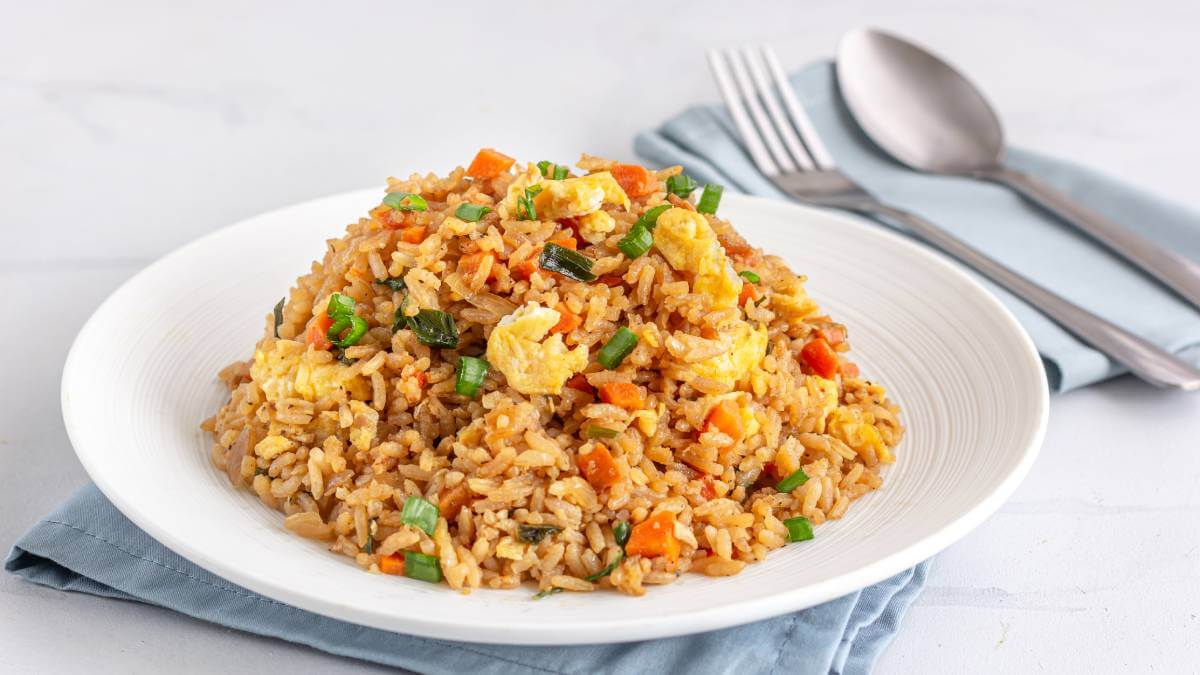It’s been a staple in Australian diets since Chinese restaurants first started appearing across the suburbs and in every decent-sized country town. We’re talking fried rice, and today we’re taking a deep dive into this delicious favourite.
Fried rice has been around for a bit. And when I say a bit, it first popped up in the Sui Dynasty that covered the period 581-618. Way before it first appeared in a Women’s Weekly cookbook, let’s put it that way.
Like many staple dishes, it has thousands of regional variations. It can be vegetarian, covered in sauce, shaped into a form, and yes, some like it hot.
It’s believed it began as a way to use up leftovers. And let’s face it, it’s still often used for that, but along the way, across centuries of history, it’s become so much more.
It can be found everywhere from the finest Asian restaurants to humble street food vendors, and a version called tumpeng is even the national dish of Indonesia.
Make it better
So how do you elevate your suburban midweek time-saver to the next level?
Well, it all starts with the rice, of course, and the best rice for fried rice is jasmine rice.
No excuses for substitution, it’s available at every supermarket these days.
Treated properly, jasmine rice will not clump together like other rice.
Nothing wrong with clumping rice, we love it in risotto and sticky rice, but for fried rice, you want the individual grains to stand proud and alone.
Don’t bother rinsing it, studies have shown that’s a bit of an old wives’ tale. The rice variety is much more important than rinsing. Good, one less step to take.
After cooking the rice as per the instructions, it’s vital to let it cool. The best way is to spread it on a baking tray. Turn it over occasionally and when it has reached room temperature or stopped steaming, pop it in the fridge uncovered for at least two hours or overnight.
Try not to die
Do not, I repeat, do not leave it unrefrigerated, you will likely end up with food poisoning.
There’s even a name for it, it’s called ‘fried rice syndrome’.
Every single one of those nice, clean looking rice grains include a bacterium known as bacillus cereus that activates as soon as you cook it. Once it is cooked, the bacteria do what bacteria are good at – multiplying.
But B. cereus is a multi-tasker. It also produces a spore that is resistant to heating, so while reheating other types of leftovers may kill bacteria, B. cereus will continue on its merry way.
Cooling the rice will slow it down, but nothing short of total immolation will stop it. And certainly, leaving it out unrefrigerated lays down the perfect conditions for a bacteria free-for-all. So in the fridge it goes.
The study outlined here says it is rare to die from this syndrome – comforting – but you will get a dose of gastro if it’s not stored properly.
So you have avoided death by refrigerating the rice – good for you – what’s next?
Be prepared
Fried rice comes together very quickly, so it’s important to have all your meat and vegetables prepped and ready to go. Cut up your ingredients and pop them in bowls stove-side.
And as for ingredients, while there are a few staples, really the choice is personal.
In our household, it’s egg ribbons, garlic, spring onions, carrots, ham or cooked bacon chunks, peas and bean sprouts. But don’t let ‘official’ recipes tie you down. Toss in what you want with wild abandon.
Other ingredient ideas include small prawns, tofu, beans, corn kernels, leftover pork belly, bok choy, Chinese sausage, capsicum (not sure about that one) and cooked chicken for chicken fried rice. I did see someone suggesting leftover brisket or salmon, but that was a US recipe, so feel safe to ignore that.
Heat a wok or large frying pan with a generous portion of vegetable oil, and I mean heat it, that oil should be near smoking.
Bit of this, a bit of that
Add your aromatics, ginger (if using) garlic and the onion, toss for a bit then add vegetables in order of cooking time. For example, cut carrots are going to take longer than peas. You’ll work it out. Cook until a tad crispy.
Then add the rice and any protein. Toss through until everything is hot.
Pour over your sauces. This is usually soy sauce, but you can also combine it with oyster sauce or a bit of rice wine vinegar.
Lastly, pour over some sesame oil. This is important. Sesame oil loses its distinctive smell and flavour very easily, so to get the best out of it, you need to put it in last.
Top with any garnish you like, such as sliced spring onions or sesame seeds. And you’re done.
Do you like fried rice? What’s your favourite ingredient? Why not share your opinion in the comments section below?
Also read: 15-minute Mushroom Risotto

